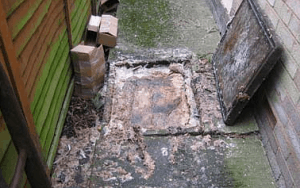The involvement of plumbing in drain blockage

more information
In present-day plumbing, a channel waste vent (or DWV) is a system that licenses air to enter the structure of the line to stay aware of genuine pneumatic power to engage the removal of sewage and greywater from a home. Channel implies water made at establishments like sinks, and showers; waste suggests water from restrooms. As the water runs down, real venting is supposed to allow water to stream straightforwardly, and avoid a vacuum from being made. As the water runs down air ought to be allowed into the waste line either through a roof vent (outside), or an inside vent for more information look in deep.

The frame of drain blockage
- DWV systems stay aware of unbiased pneumatic power in the channels, allowing free movement of water and sewage down channels and through waste lines by gravity. A satisfactory plummeting incline really must be stayed aware of all through the channel pipes, to keep liquids and entrained solids streaming transparently towards the central channel from the construction.
- In specific conditions, a slipping slope out of construction to the sewer can’t be made, and an exceptional variety pit and pulverizing lift “sewage ejector” siphon are required. Then again, consumable water supply systems work under significant pressure to fitting water up through structures and needn’t bother with a tireless slipping grade in their channeling.
- Every establishment is supposed to have an inside or outside trap; twofold getting is blocked by plumbing codes due to its shortcoming to impeding. Each plumbing establishment ought to in like manner has an attached vent. Without a vent, negative strain from water leaving the system can cause a siphon that debilitates the catch.
- The most elevated place of stacks ought to be vented also, through a stack vent, which is to a great extent called a smell pipe. All plumbing waste establishments use traps to prevent sewer gases from spilling into the house.
- Through traps, all establishments are related to waste lines, which in this way assume the misfortune of a “soil stack”, a.k.a. “soil stack pipe”, “soil vent line” or “rule”. At the design channel system’s most raised point, the channel waste vent is added, and rises (ordinarily inside a divider) to and out of the housetop.
- Waste ways out from the construction through the design’s essential channel and travels through a sewage line, which prompts a septic structure or a public sewer. Cesspits are generally limited in made locales. In the US, establishments ought to have a vent (delivering into the “standard stack” isn’t viewed as adequate).
The venting system :
plumbing vents involve different lines driving from waste lines to the outside, when in doubt, through the roof. Vents give a method for conveying sewer gases outside as opposed to inside the house. Vents moreover yield oxygen to the waste system to allow energetic sewage ingestion and to put poisonous anaerobic rot down. Vents give a strategy for adjusting the strain on the different sides of a catch, thusly allowing the catch to hold the water as would be considered normal to stay aware of the reasonability of the catch, and avoid “trap suckout” which regardless could occur.
Errands
A sewer pipe is routinely at impartial pneumatic power diverged from the enveloping air. At the point when a segment of wastewater flows through a line, it packs air before it in the line, making a positive strain that ought to be conveyed so it doesn’t push back on the waste stream and downstream catch water seals.
